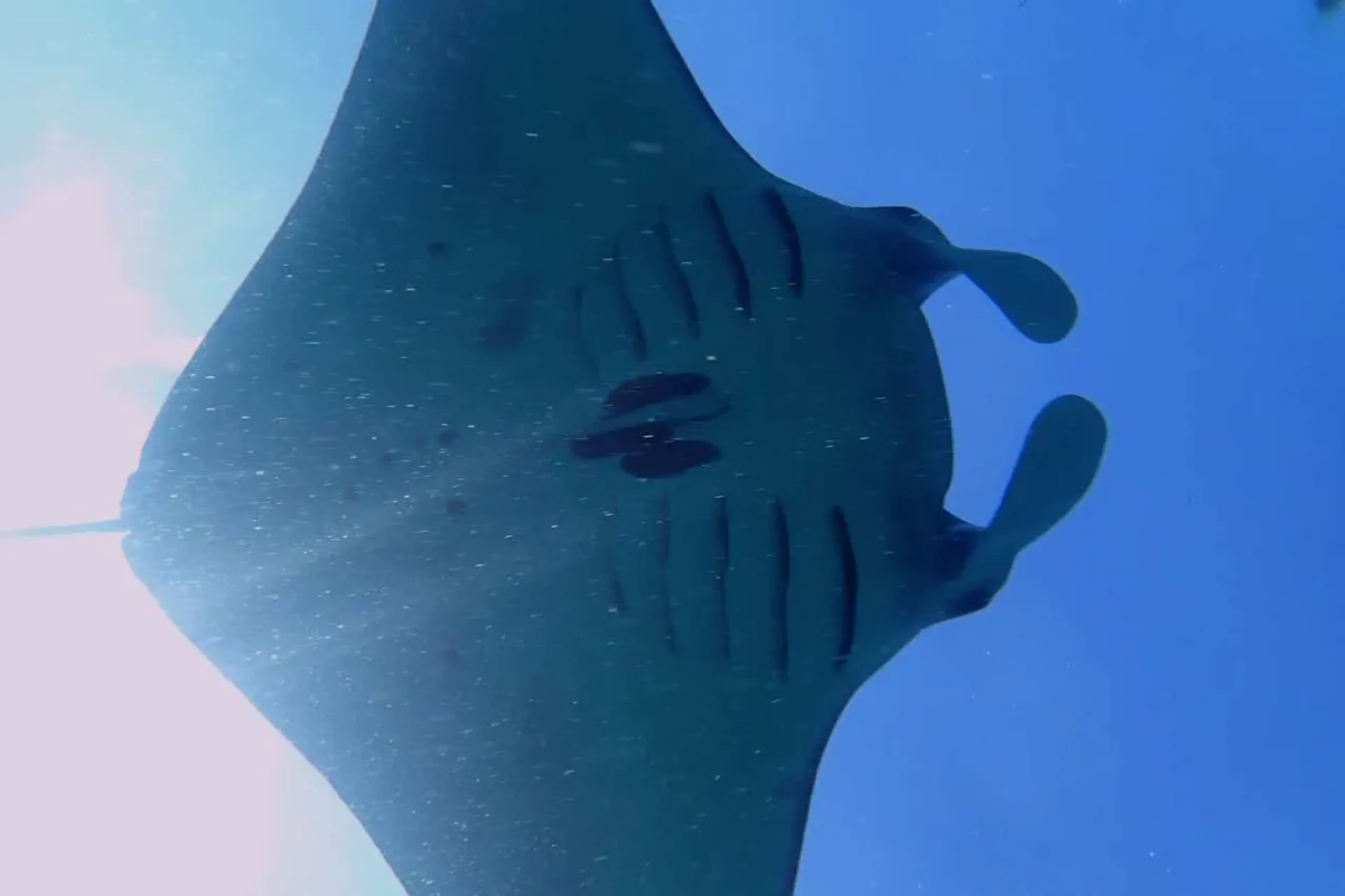Isabelle Barbier
• 6 min read
Seeing mantas underwater is mesmerizing. Not only are they beautiful to watch, they're incredibly intelligent - their brains are larger than any other fish.
Mantas are social creatures and are often found feeding in groups, soaring through the water behind one another as they feed on plankton. They are a must-see for any diver.
We reveal some of the best destinations to see manta rays, ranging from the most economical to the most exclusive. You will know when to go, how to get there, and who to dive with!
Dive trips range from 550 USD to more than 5,000 USD, catering to every diver's budget and holiday style. Our recommended dive operators have been hand-picked for their knowledge of the sites, professionalism, and their positive impact on toward marine conservation.
1. Tofo, Mozambique
It's no wonder Marine Megafauna Foundation established its first base in Tofo to study mantas and whale sharks. The local upwelling phenomenon brings a lot of plankton, attracting these majestic filter-feeding creatures.
When to Go: January to March or June to December
How to Get There: pretty much everyone arrives from the south via Maputo (the capital of Mozambique). Then, either take a transfer by minivan (6-8 hrs) or a local flight to Inhambane which is a half-hour drive from Tofo.
SeaCrush Pick: 👉 This dive shop in Tofo! (7 nights starting from ...)
2. Nusa Penida, Indonesia
Nusa Penida has two sites where mantas are seen on almost a daily basis. One of the sites is accessible for snorkeling, but divers will enjoy the manta cleaning station where they'll have their skin, gills and teeth cleaned by smaller "parasitic" fish species.
When to Go: April to October
How to Get There: fly to Denpasar, Bali, and join a dive shop for a day trip from Bali, or take a speed boat to Nusa Penida if you want to stay a few days to explore the island.
SeaCrush Pick: 👉 This dive resort in Nusa Penida! (7 nights starting from ...)
3. Komodo National Park, Indonesia
With its dragons and superb marine life, Komodo national park is definitively a go-to destination for explorers. Mantas are very frequently sighted in Komodo. Between manta dives, you'll be able to see much more: spectacular macro life, sharks, and a lot of life!
When to Go: May to November
How to Get There: fly to Denpasar(DPS) in Bali and embark on a cruise to Komodo. Or take an hour and a half flight from Denpasar to Labuan Bajo on the island of Flores.
SeaCrush Picks:
👉 This liveaboard that goes from Bali to Komodo and back (7 nights starting from ...)
or, if you prefer staying on a private island:
👉 This incredible dive resort on Komodo (7 nights starting from ...)
4. Mergui Archipelago, Burma
With over 800 islands sprinkled throughout 12,000 square kilometers of crystalline waters, everything waiting to be discovered! Burma waters only recently opened in 1997 and very few divers have ever been there. One of our favorite sites to see oceanic manta rays - which is the largest species of manta rays - is Black Rock. It's far into the interior, so you'll need to book one of the longer cruises (seven or more days).
When to Go: November to April
How to Get There: fly to Bangkok or Phuket in Thailand. Then head to Ranong, still in Thailand by plane, train and/or the bus. From there you will embark on the liveaboard.
SeaCrush Picks:
👉 This liveaboard that takes you through the Mergui Archipelago (5 nights starting from ...)
5. Socorro, Mexico
Off the west coast of Mexico, Socorro or the ‘Revillagigedo archipelago’ is one of the best dive sites in the world to see the larger 'oceanic mantas'. Curious creatures, as always, they usually come say hello to divers. Oceanic mantas can span as much as nine meters - imagine seeing that!
When to Go: from November to July
How to Get There: fly to San Juan los Cabos, Baja California, and embark on our liveaboard. You will reach the first dive sites after a 24-hour cruise into the ocean.
SeaCrush Pick: 👉 This liveaboard that takes you to Socorro (8 nights starting from ...)
6. Raja Ampat, Indonesia
At the heart of the Coral Triangle, in West Papua, Indonesia, Raja Ampat has some of the most bio-diverse waters in the world: 1427 reef fish, over 600 coral species or 75% of the world’s coral species. You will get a chance to see reef mantas in a few different sites and, if you're lucky, you might spot oceanic mantas at at the Blue Magic site.
When to Go: October to April
How to Get There: Take an international flight to Jakarta or Bali and then fly to Sorong via Manado or Makassar. From there, take a transfer boat to your island or embark on a liveaboard.
SeaCrush Picks:
👉 This world-renowned eco-resort in Raja Ampat (7 nights starting from ...)
or
👉 This liveaboard that takes you through all of Raja Ampat (8 nights starting from ...)
7. Cocos Island, Costa Rica
Last but not least, Cocos Island: with mantas and hammerhead sharks among its frequent visitors, it is among the top-ten dive destinations in the world. This is a trip very experienced divers as currents are usually strong.
When to Go: June to November
How to Get There: located 500 km south west of Cabo Blanco, Costa Rica. After flying to San Jose, go to Puntarenas to embark for a 36-hour journey until the first dive. It's quite a journey...and this is why the marine life is exceptional!
SeaCrush Pick: 👉 This Cocos Island liveaboard (10 nights starting from ...)
About Diving with Manta Rays...
Manta rays are incredibly intelligent and often near you to get a close look. However, it's important to follow a few rules when interacting with them to ensure a positive experience for both you and the rays. Please read and follow the code of conduct for diving with manta rays which we've re-published from one of our partners, the Marine Megafauna Foundation.


